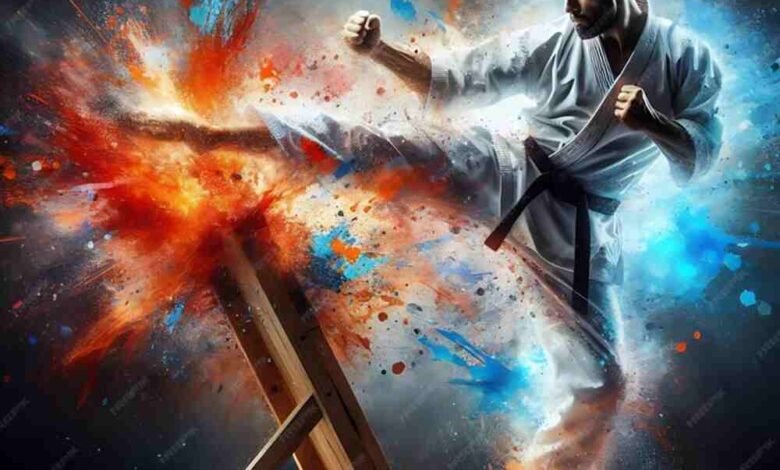Apex Future Martial Arts – Chapter 2

Apex Future Martial Arts – Chapter 2: Martial arts have been a significant part of human culture for centuries. They not only promote physical fitness but also enhance mental discipline, self-defense skills, and self-esteem. In Chapter 2 of “Apex Future Martial Arts,” we dive deeper into the evolving landscape of martial arts in the modern world. This chapter focuses on the importance of adapting traditional techniques to meet the challenges of contemporary society while embracing technology and innovation in training methods.
As martial arts continue to grow in popularity, instructors and practitioners are exploring new ways to enhance their training experiences. This chapter highlights various styles, training methods, and the impact of technology on martial arts. The aim is to create a more inclusive and effective martial arts community that caters to the needs of today’s practitioners. Let’s explore the key concepts and trends discussed in this chapter.
Evolution of Martial Arts Styles
Traditional vs. Modern Techniques
In the world of martial arts, there is a rich tapestry of styles that have developed over centuries. Traditional martial arts, such as Karate, Taekwondo, and Judo, have deep historical roots and emphasize respect, discipline, and self-control. These arts often follow strict forms and patterns, allowing students to connect with the history and culture behind them.
However, modern martial arts have begun to adapt these traditional techniques to address contemporary needs. Styles like Mixed Martial Arts (MMA) blend various disciplines to create a more versatile fighting style. This evolution reflects the changing landscape of martial arts, where practitioners seek practical applications of their skills in real-life situations. The merging of traditional and modern techniques enables students to benefit from the rich heritage of martial arts while gaining the tools necessary for self-defense and competition in today’s world.
Inclusivity in Martial Arts
Another significant trend discussed in Chapter 2 is the growing inclusivity within the martial arts community. Traditionally, martial arts were often viewed as exclusive or limited to specific demographics. However, schools and organizations are now focusing on making martial arts accessible to everyone, regardless of age, gender, or physical ability.
Programs designed for children, seniors, and individuals with disabilities are gaining popularity. These initiatives promote a sense of belonging and empowerment, allowing more people to experience the physical and mental benefits of martial arts training. By fostering an inclusive environment, martial arts can reach a broader audience and help individuals discover their potential.
The Role of Technology in Martial Arts Training
Online Learning Platforms
Technology has revolutionized many aspects of our lives, including martial arts training. In Chapter 2, the emergence of online learning platforms is discussed as a key development in the martial arts world. These platforms allow students to access classes and tutorials from the comfort of their homes, making training more flexible and convenient.
Online resources provide a wealth of knowledge, from instructional videos to virtual classes led by experienced instructors. This accessibility enables practitioners to learn at their own pace, revisit techniques, and connect with a global community of martial artists. As a result, more individuals can engage with martial arts, regardless of their geographical location.
Virtual Reality and Training Apps: Apex Future Martial Arts – Chapter 2
The integration of virtual reality (VR) and training apps into martial arts is another exciting development. VR technology allows practitioners to simulate sparring and combat scenarios in a safe environment, helping them improve their skills and confidence. These immersive experiences can enhance reflexes and decision-making skills, making training more engaging and effective.
Training apps also play a crucial role in tracking progress and setting goals. Many apps offer personalized training plans, instructional videos, and progress monitoring features that help students stay motivated. By utilizing technology in their training, martial artists can enhance their performance and achieve their objectives more efficiently.
Challenges in Modern Martial Arts
Balancing Tradition and Innovation
While the evolution of martial arts presents many benefits, it also comes with challenges. One of the primary concerns is finding the right balance between tradition and innovation. Some practitioners believe that preserving traditional methods is essential for maintaining the integrity of martial arts, while others argue that adapting to modern techniques is necessary for growth.
This debate highlights the importance of respecting the history and culture of martial arts while embracing new approaches. Instructors must navigate this balance to create a curriculum that honors traditional values while preparing students for the realities of modern practice.
Combatting Misconceptions
Another challenge facing modern martial arts is addressing misconceptions and stereotypes. Many people still view martial arts as purely violent or aggressive. However, martial arts are fundamentally about discipline, respect, and self-improvement. Educating the public about the true nature of martial arts is crucial for fostering a positive image and encouraging more individuals to participate.
Instructors play a vital role in dispelling these myths by emphasizing the core values of martial arts in their teaching. By showcasing the physical and mental benefits, as well as the sense of community within martial arts, they can attract more students and promote a healthier understanding of these practices.
Conclusion: Apex Future Martial Arts – Chapter 2
Chapter 2 of “Apex Future Martial Arts” highlights the dynamic and evolving nature of martial arts in today’s world. The blending of traditional and modern techniques, the push for inclusivity, and the integration of technology are shaping the future of martial arts. As practitioners and instructors adapt to new challenges and opportunities, the essence of martial arts remains rooted in respect, discipline, and personal growth.
Looking ahead, it is essential for the martial arts community to continue fostering an inclusive environment while balancing tradition and innovation. By embracing technology and addressing misconceptions, martial arts can flourish and reach new heights. The journey of martial arts is ongoing, and with the right mindset, it will continue to inspire and empower individuals for generations to come.
FAQs: Apex Future Martial Arts – Chapter 2
Q: What is the significance of blending traditional and modern martial arts techniques?
A: Blending traditional and modern techniques allows practitioners to gain practical self-defense skills while honoring the history and culture of martial arts.
Q: How are online learning platforms changing martial arts training?
A: Online learning platforms provide accessible training resources, allowing practitioners to learn at their own pace and connect with instructors globally.
Q: What role does technology play in modern martial arts?
A: Technology enhances training through virtual reality simulations and training apps, making practice more engaging and effective.
Q: How is inclusivity being promoted in martial arts?
A: Inclusivity is being promoted through programs designed for various demographics, ensuring that martial arts are accessible to everyone.
Q: What challenges do modern martial arts face?
A: Modern martial arts face challenges such as balancing tradition with innovation and combating misconceptions about their nature.





